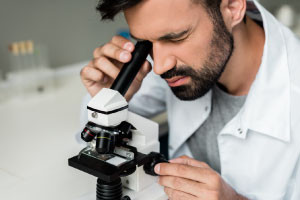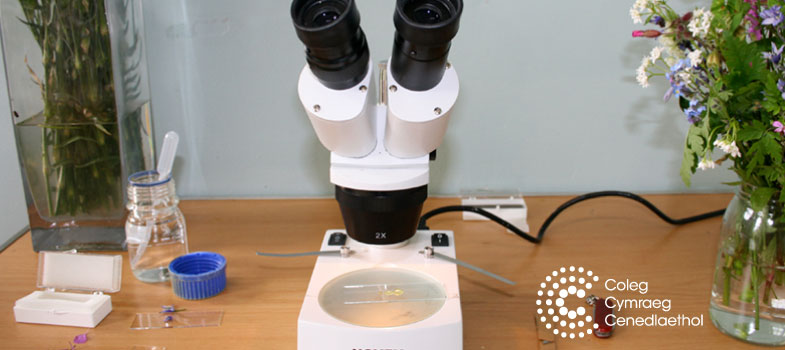أساسيات اللوني

Alison Review
الموقع
Online(رابط الدورة)
التاريخ
عند الطلب
أقسام الدورات
الرياضيات والعلوم و الهندسة
الشهادة
Yes()
اللغة
الإنجليزية
رسوم الدورة
مجانيةعدد الحضور
غير محدود
المهارات المكتسبة
- Describe the properties of a protein molecule
- Explain the different precautions to take while using the chromatography machine
- Discuss the mechanism of separation in chromatography
| اسم مقدم الدورة | Alison |
|---|---|
| مجالات التدريب |
|
| موقعك الإلكتروني (URL) | https://alison.com/ |
| حول المزود |
Alison is one of the world’s largest free
learning platforms for education and skills training. It is a for-profit social
enterprise dedicated to making it possible for anyone, to study anything,
anywhere, at any time, for free online, at any subject level. Through our
mission we are a catalyst for positive social change, creating opportunity,
prosperity, and equality for everyone. Alison was founded in Galway, Ireland, in 2007
and has grown organically to become a major force in free online education and
skills training. Today, with more than 13 million learners in 195 countries,
Alison is changing how the world learns and up-skills. They are committed to equality and access to
education and skills training irrespective of gender, geography, economic
status or any other barriers that can so often stunt potential. So they offer a
range of free courses that meet the many diverse needs of our learners. The UN
declared in Article 26 of the 1946 Declaration of Human Rights that “Education
shall be free…”. This statement will always inspire us. Alison was founded by Alison CEO, Mike Feerick. Mike is a businessman, but one with a
difference. He believes in social impact, and that you can build a financially
successful business focused on meeting a huge global social need, making
education and skills training more accessible for everyone. He invites anyone
who believes that too, to support the Alison mission.
Alison is free of charge to you. But it’s still
a business – albeit a socially-focused one. We are a social enterprise making
our money through advertising, merchandise, and the sale of Certificates and
Diplomas, should a graduate choose to buy one. |
When you study the fundamentals of chromatography, you will explore the fact that it is a technique that allows scientists to separate molecules of interest from a crude mixture. The purpose of chromatography is to separate a complex mixture into individual components exploiting the partition effect which distributes the molecules into different phases, will also be discussed. You will find out that in cation exchange chromatography, the matric has a negatively charged functional group with an affinity towards positively charged molecules. You will be introduced to the concept of hydrophobic interaction chromatography (HIC), which exploits the ability of strong interactions between the hydrophobic group attached to the matrix and hydrophobic patches present on an analyte such as a protein. You will learn that in the presence of a high amount of salt, the water molecule shielding the protein side chains, are displaced completely with an exposure of hydrophobic patches on the protein surface to induce protein precipitation or a reduction in protein solubility. You will discover that the addition of a low amount of salt to the protein solution results in the displacement of bonded water molecules with an increase in protein solubility. Demonstrations, problems, examples and assessment questions in this instructor-led video-based course, are designed to provide you with a comprehensive foundation in chromatography.
in each course assessment. Once you have completed this Certificate course, you have the option to acquire an official Certificate, which is a great way to share your achievement with the world. Your Alison Certificate is:
Ideal for sharing with potential employers - include it in your CV, professional social media profiles and job applications
An indication of your commitment to continuously learn, upskill and achieve high results
An incentive for you to continue empowering yourself through lifelong learning
Alison offers 3 types of Certificates for completed Certificate courses:
Digital Certificate - a downloadable Certificate in PDF format, immediately available to you when you complete your purchase
Certificate - a physical version of your officially branded and security-marked Certificate, posted to you with FREE shipping
Framed Certificate - a physical version of your officially branded and security-marked Certificate in a stylish frame, posted to you with FREE shipping
All Certificates are available to purchase through the Alison Shop. For more information on purchasing Alison Certificates, please visit our FAQs. If you decide not to purchase your Alison Certificate, you can still demonstrate your achievement by sharing your Learner Record or Learner Achievement Verification, both of which are accessible from your Dashboard. For more details on our Certificate pricing, please visit our Pricing Page.
When you study the fundamentals of chromatography, you will explore the fact that it is a technique that allows scientists to separate molecules of interest from a crude mixture. The purpose of chromatography is to separate a complex mixture into individual components exploiting the partition effect which distributes the molecules into different phases, will also be discussed. You will find out that in cation exchange chromatography, the matric has a negatively charged functional group with an affinity towards positively charged molecules. You will be introduced to the concept of hydrophobic interaction chromatography (HIC), which exploits the ability of strong interactions between the hydrophobic group attached to the matrix and hydrophobic patches present on an analyte such as a protein. You will learn that in the presence of a high amount of salt, the water molecule shielding the protein side chains, are displaced completely with an exposure of hydrophobic patches on the protein surface to induce protein precipitation or a reduction in protein solubility. You will discover that the addition of a low amount of salt to the protein solution results in the displacement of bonded water molecules with an increase in protein solubility. Demonstrations, problems, examples and assessment questions in this instructor-led video-based course, are designed to provide you with a comprehensive foundation in chromatography.
The material introduces you to the mechanisms of separation in chromatography and the different physical properties that can be used to separate molecules. Then, the proteins will be discussed, which have minimum solubility in solutions with a pH that corresponds to their Pi and they often precipitate out of solution. You will explore the fact that the molecular weight and size of a protein is related to the shape of the molecule and the relationship between its molecular weight and the radius of gyration. You will discover the fact that the retention time refers to the time it takes for an analyte to come out from the column. It will be clarified that the two major forms of chromatography are partition chromatography and adsorption chromatography. You will discover that in column chromatography, a stationary phase is filled into a cylindrical tube made up of glass or steel. You will also learn that the plot of the elution volume, along with the absorbance, is known as a chromatogram. You will find out that the term resolution, refers to the ability of a chromatography column to separate two analyte peaks from one another.
Next, you will learn that for the fast protein liquid chromatography (FPLC) instrument the plastic columns are the most appropriate to use, whilst for the high-performance liquid chromatography (HPLC) instrument the stainless still columns are the most appropriate to use. You will gain insight into the fact the size of the loop depends on how much protein you want to inject and the column capacity. You will then discover that the four properties of a protein molecule are the charge, surface area, affinity and its hydrophobicity. You will be taught that the different chromatography techniques that you can use to exploit the properties of a protein molecule are ion-exchange chromatography (IEX), HIC, gel filtration chromatography and affinity chromatography. You will discover that when preparing matrix beads for chromatography, the first step is to swell the medium, followed by the removal of very small particles and the last step is the equilibration with counter ions. Finally, you will study chromatography techniques, column connections, cation exchange chromatography buffers, and methods of analyzing eluents. This course will be of interest to biotechnology students, or those professionals in experimental biotechnology who want to hone their technical knowledge.






















